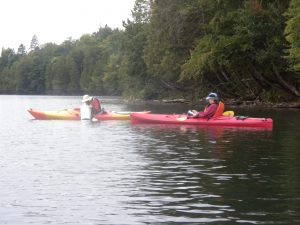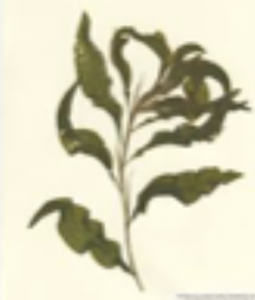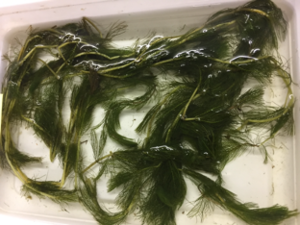Lakebed Survey Coordinator: Peggy Stevens
Volunteers: Holly Bull, Lori Kempton, Peter Bestenbostel, Ann Hunsicker, Patti Lennon, Ma ryanne O’Brien, Hugh Hawkins, Peggy Stevens, Susan Czerepak, Larry Martin, Amy Wagner, Tom Wagner
ryanne O’Brien, Hugh Hawkins, Peggy Stevens, Susan Czerepak, Larry Martin, Amy Wagner, Tom Wagner
The Watershed Management Division of the Vermont Department of Environmental Conservation (DEC) promotes the Vermont Invasive Patroller Program, which relies on volunteers to monitor water bodies for new introductions of invasive species and report their findings to the DEC.
The Echo Lake Protective Association organizes a volunteer staff of Access Greeters and Lakebed Surveyors, many of whom are trained Vermont Invasive Patrollers. The Lakebed Survey volunteers conduct an Aquatic Plant Survey twice during the summer months and record what plants are generally found in each section of the lake.
In the summer of 2021, a total of over 40 volunteer hours were used to survey the lake, covering about 100% of the lakeshore, and no invasive aquatic species were noted in the areas surveyed. Although not aquatic plants, it is observed that Phragmites and Japanese knotweed, both invasive species, are taking hold in some spots along the waterfront and could present a lakeshore infestation problem in the future.

The species type and distribution of plants in the lakebed vary somewhat from year to year. The predominant species are in the pondweed family and wild celery with a lesser density of native aquatic plants here and there. Inlets seem to be more nutrient-rich with the greatest density of weedy growth. The major inlet at White Birch Lodge, however, has much less density of growth than surveyed in previous years. We don’t know if it is because of decreased nutrients coming in from Seymour Lake, because of the significant sand runoff from the bridge, or some other reason.
We need more volunteers: The Vermont Invasive Patrollers program is very important to the defense of the lake from invasive species. Access Greeters have intercepted boats that tested positive year for Eurasian Watermilfoil in the past. The lakebed survey is our second line of defense against invasives established permanently.
VIP Workshops
VIP workshops provided by Lakes and Ponds Division cover such fundamentals as:
- The fundamentals of lake ecology
- The difference between a native, exotic, nuisance, and invasive species
- How invasive species are introduced and established
- How to identify common aquatic plants and animals, both native and invasive (the latter are emphasized)
- How to conduct surveys for invasive species in their natural habitat
The 2.5-hour VIP workshop includes hands-on classroom time and an optional site visit to view invasives, including starry stonewort, a new to Vermont invasive macroalgae. 2022 marks VIP’s 16th year.

As Association members, it would be helpful if we each could take responsibility for our own stretch of the lakebed. During the summer, we all spend a good deal of our time on or in the water. Devoting a few hours of that time as VIPs would benefit us all. Become familiar with the native plants that help to create a healthy lakebed habitat. If you find something unfamiliar, call Peggy Stevens or another trained VIPs listed below who can help to identify plant species and rule out any concerns. Although it isn’t necessary, all lakeshore property owners are encouraged to become trained VIPs.
If you would like to volunteer, please contact Peggy Stevens at 802-723-5951. Even if you’re not trained as a patroller, you can help!
Access the VIP Survey Form and Echo Lake Map here:
Echo Survey Form – https://dec.vermont.gov/sites/dec/files/VIPSurveyDataSheet.pdf
Echo Survey Map – https://www.echolakeassociation.net/wp-content/uploads/2018/09/Echo-Survey-Map.pdf
Helpful Links
Watershed Management Division
http://www.watershedmanagement.vt.gov/lakes/htm/ans/lp_VIP.htm
Vermont Invasive Patrollers Training Manual
https://dec.vermont.gov/sites/dec/files/wsm/lakes/ans/docs/2019%20VIP%20Manual%20Final.pdf